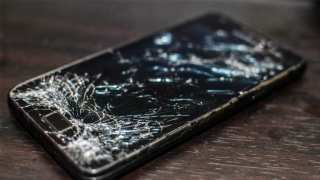What do atoms really look like in nature?
We tend to visualize these particles as electrons orbiting a spherical nucleus in defined, concentric shells, like the diagrams seen in many chemistry and physics textbooks.
However, there is little evidence that this material really translates into reality. In fact, some researchers think that the central features of these images work out as we think, in nature. These features are the atomic nuclei, which define what the atom is, through the numbers of neutrons and protons present in it. For a long time, these particles were perceived as simple spherical conglomerations of atomic particles.
However, atomic and sub-atomic science has reached a point where these theories can be challenged and tested. The facilities and techniques behind the discipline (e.g., CERN) have procured data that could suggest the actual conformation and order in which some atomic nuclei exist.
These findings have many implications for the future of physics, chemistry and every other area of study that stems from them.

It now appears that atoms are slightly more complicated than diagrams in textbooks. (Source: Pumbaa (original work by Greg Robson) @ Wikimedia Commons)
Sub-units for Atoms?
Such topics were discussed in a recent (June 2018) paper in the journal Physical Review C.
In this article, a team of physicists from the Niewodniczański Institute of Nuclear Physics and the Institute of Physics at Jan Kochanowski University in Poland presented their predictions of how light atomic (which typically are stable nuclei associated with elements of an atomic number of 206 or less) nuclei look.
These hypotheses were developed as a result of nuclear collision experiments conducted at CERN’s Super Proton Synchrotron. The group largely supported the presence of alpha clusters in the light nuclei of certain elements, including those of carbon and oxygen.
Alpha clusters are defined as small sub-structures within a light nucleus. They are made up of four particles each: two protons and their corresponding nuclei. Therefore, the three-dimensional shape of a nucleus with more than four protons or neutrons would not be able to conform to the older theoretical concept of general nuclear sphericity.
For example, an atom of carbon with the standard-issue 12 protons and neutrons (i.e., 12C) would form itself into a sort of alpha-cluster triangle. Oxygen usually has an atomic number of 16, and therefore, its four alpha cluster has been thought to most likely form a pyramid in three dimensions.
In general, the alpha cluster theory states that there is a nuclear sub-unit, which is roughly equivalent to an atom of 2-helium.
However, this theory becomes slightly more complicated in the case of atoms with odd numbers of neutrons. For example, beryllium can exist as either 7Be or 9Be. Therefore, this element would most closely resemble a barbell in the case of 7Be, with the one spare neutron as the central bar. 9Be would be less clearly defined as it would have a free neutron without a central space between two clusters to take.

Alpha-clustering structure of light nuclei. (Source: Francesco Iachello, Prof. of Physics and Chemistry, Yale University)
But, the alpha-cluster model is still largely academic, with little physical evidence to back it up.
Testing the Alpha Cluster Theory
The Phys Rev C paper, however, may offer some confirmation for this new theory.
The study included the analysis of data relevant to the subject, captured in the course of an experiment conducted on the nuclear structure of 7Be. It involved taking this nucleus and inducing a collision with another, 208-lead (208Pb) in this case.
This event would have resulted in a catastrophic explosion in which the sub-atomic particles (particularly the quarks and gluons) would fly apart in a cloud of plasma. However, these particles would also have flown off in minutely different speeds and directions (broadly determined by their erstwhile positions in either protons or neutrons).
The extrapolation and reconstruction of this data, therefore, is an accurate and adroit way to assess nuclear structure, prior to the plasma-generating reaction. The 208Pb nucleus would have been present to ‘highlight’ that of the 7Be’s, as it were.
The visualization of the data that resulted from these experiments distinctly showed the particles that made up the 7Be nucleus in shapes highly reminiscent of a deformed ellipsis in the first few milliseconds of the reaction. In other words, the barbell shape predicted in line with the alpha-cluster theory was likely to fit this image.
The Polish team also claimed that the same experiments conducted in the presence of either 16O or 12C, in place of 7Be, were likely to result in similar images with triangular shapes. Therefore, this data gives further weight to the alpha cluster theory of nuclear morphology.
These investigations further enabled the researchers to conclude that the shape of the beryllium nuclei conformed to their predictions. The findings may have future implications for atomic structure, and also for that of the sub-particles that make up light nuclei.
This line of research, in turn, may inform the evolution of atomic physics and its applications in the future.
Top Image: Visual representation of the collision experiment at the onset of the plasma reaction, showing 7Be in something that could conform to its predicted shape. (Source: IFJ PAN)
References
The chances of detecting clumps in atomic nuclei are growing, 2018, IFJ PAN Press Office, https://press.ifj.edu.pl/en/news/2018/06/14/ , (accessed 18 Jun. 18)
M. Rybczyński, et al. (2018) Signatures of $\ensuremath{\alpha}$ clustering in ultrarelativistic collisions with light nuclei. Physical Review C. 97:(3). pp.034912.
Z. Sosin, et al. (2016) Alpha-cluster model of atomic nuclei. The European Physical Journal A. 52:(5). pp.120.







No comment